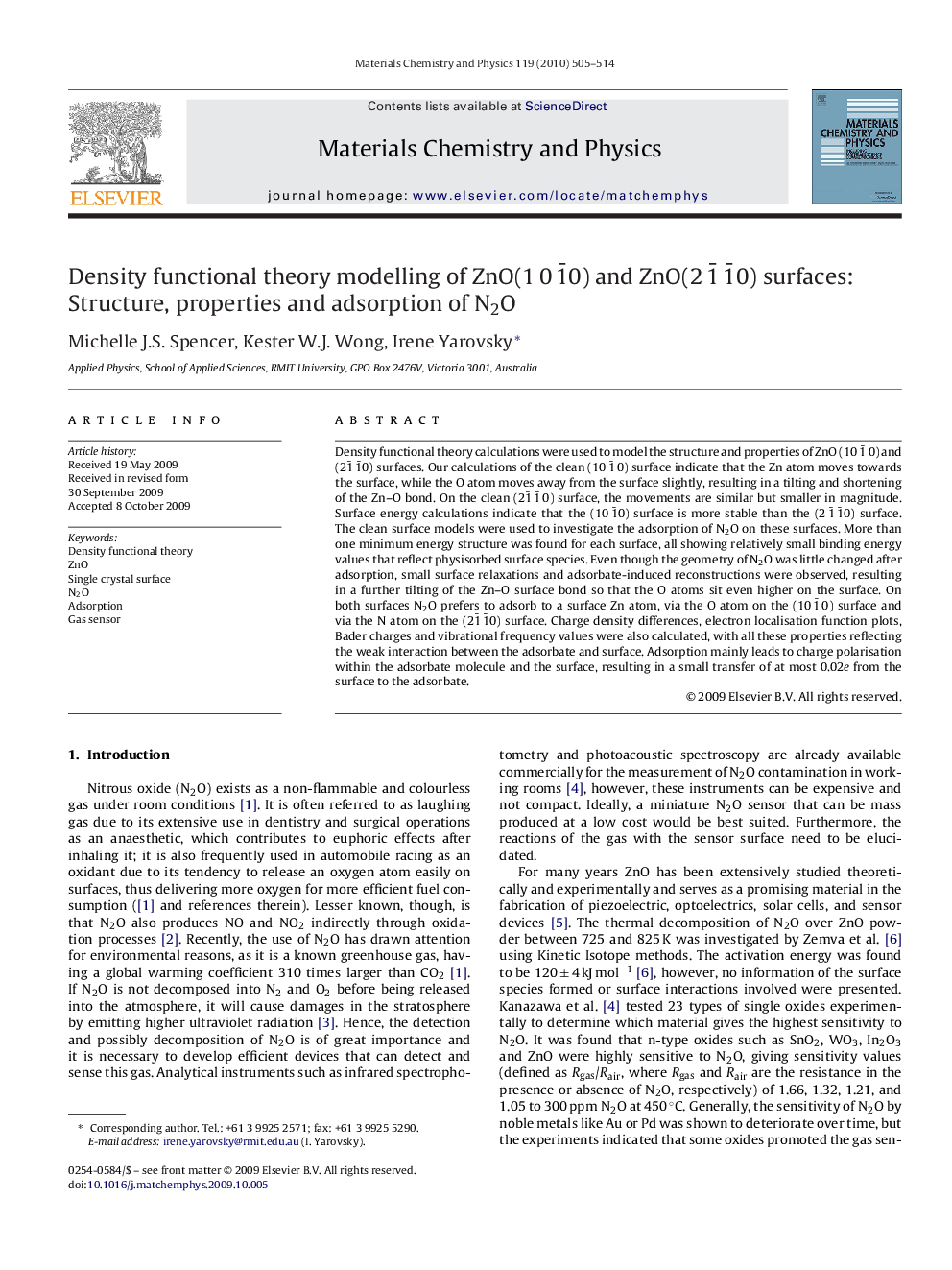| کد مقاله | کد نشریه | سال انتشار | مقاله انگلیسی | نسخه تمام متن |
|---|---|---|---|---|
| 1525628 | 995358 | 2010 | 10 صفحه PDF | دانلود رایگان |

Density functional theory calculations were used to model the structure and properties of ZnO (1 0 1¯ 0) and (2 1¯ 1¯ 0) surfaces. Our calculations of the clean (1 0 1¯ 0) surface indicate that the Zn atom moves towards the surface, while the O atom moves away from the surface slightly, resulting in a tilting and shortening of the Zn–O bond. On the clean (2 1¯ 1¯ 0) surface, the movements are similar but smaller in magnitude. Surface energy calculations indicate that the (1 0 1¯ 0) surface is more stable than the (2 1¯ 1¯ 0) surface. The clean surface models were used to investigate the adsorption of N2O on these surfaces. More than one minimum energy structure was found for each surface, all showing relatively small binding energy values that reflect physisorbed surface species. Even though the geometry of N2O was little changed after adsorption, small surface relaxations and adsorbate-induced reconstructions were observed, resulting in a further tilting of the Zn–O surface bond so that the O atoms sit even higher on the surface. On both surfaces N2O prefers to adsorb to a surface Zn atom, via the O atom on the (1 0 1¯ 0) surface and via the N atom on the (2 1¯ 1¯ 0) surface. Charge density differences, electron localisation function plots, Bader charges and vibrational frequency values were also calculated, with all these properties reflecting the weak interaction between the adsorbate and surface. Adsorption mainly leads to charge polarisation within the adsorbate molecule and the surface, resulting in a small transfer of at most 0.02e from the surface to the adsorbate.
Journal: Materials Chemistry and Physics - Volume 119, Issue 3, 15 February 2010, Pages 505–514